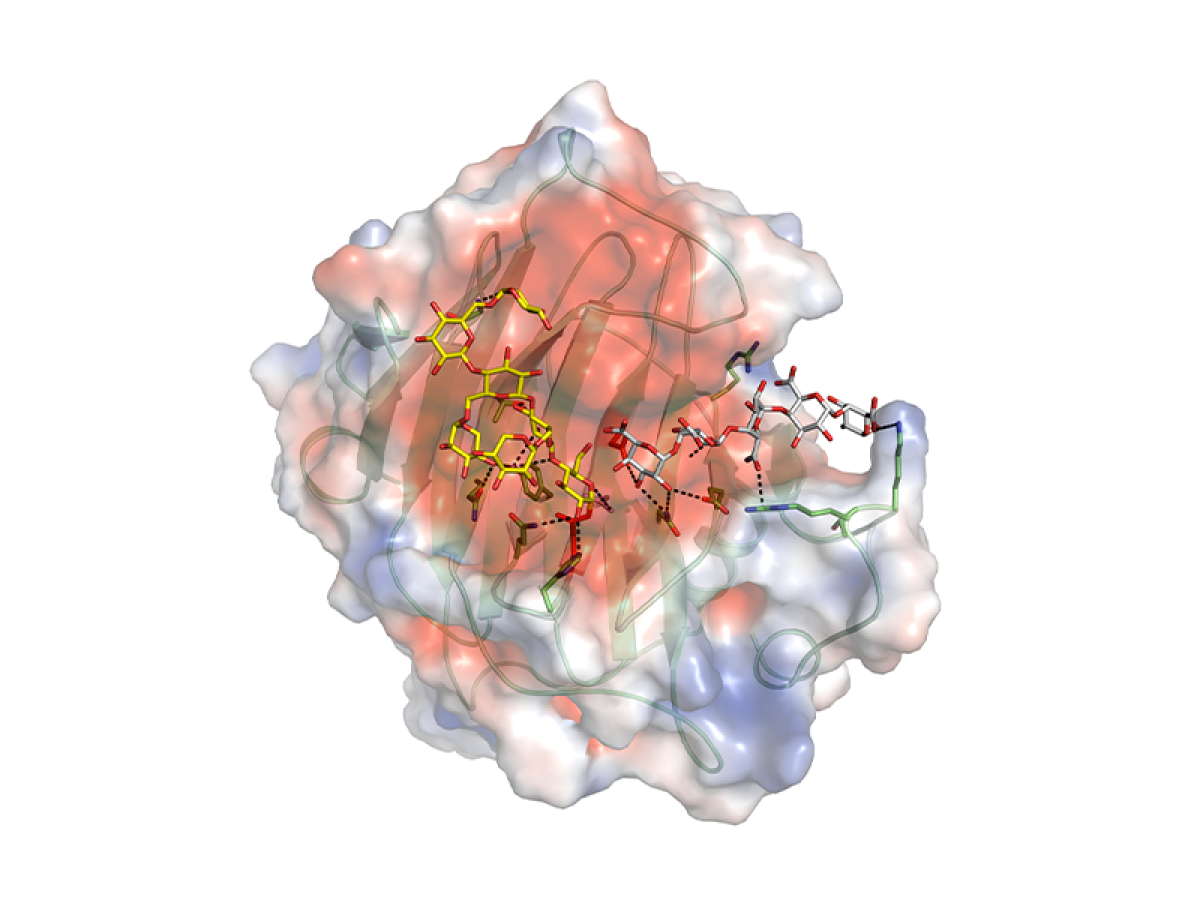A newly discovered way of optimising plant enzymes through bioengineering has increased knowledge of how plant material can be converted into biofuels, biochemicals and other high-value products.

A 3D image of nasturtium xyloglucan xyloglucosyl transferase with bound substrate reactants.
The University of Adelaide-led study presents innovative ideas for how the walls of plant cells can be assembled, structured and remodelled by controlling specific enzymes' catalytic function.
Fundamental plant cell properties - such as structure, integrity, cytoskeletal organisation and stability - are now viewed differently, suggesting new alternatives.
Studying the catalytic function of specific enzymes - a process termed 'xyloglucan xyloglucosyl transferases' - allowed researchers to better understand how they link diverse polysaccharides to form structural components of plant cell walls.
"This work contributes to the essential knowledge of how xyloglucan xyloglucosyl transferases can be understood and their fundamental properties controlled - for example, to improve their catalytic rates and stability," said project leader Professor Maria Hrmova.
For plant material to be used in the production of biofuels, plant cell walls need to be deconstructed and the resultant materials chemically processed. The properties of the cell walls can be altered to be less rigid, therefore making biofuel production more efficient and cost-effective.
The finding also has applications for the pharmaceutical industry, where enzymes are sought as environmentally friendly and cost-effective options in bioremediation, and other applications.
Bioremediation is the removal of contaminants, pollutants and toxins from the environment through the use of living organisms.
"Although the definition of the catalytic function of xyloglucan xyloglucosyl transferases has significantly progressed during the past 15 years, there are limitations, and still a lack of information, in how this knowledge can be organically implemented in the functionality of plant cell walls," she said.
This teamwork builds upon 60 years of xyloglucan chemical and biochemical research of this and other research groups.
The research team used sensitive high-performance liquid chromatography with fluorescent reagents to monitor complex biochemical reactions of polysaccharides in an efficient way.
"We also applied 3D molecular modelling and molecular dynamics simulations to gain insights into the mode of action of these enzymes on fast time scales," Professor Hrmova said.
"Our findings are supported by plant and cellular biology approaches we used to offer novel ideas on the function of these enzymes in vivo."
The study was published in the prestigious Plant Journal and was conducted with an international, multidisciplinary team of researchers from the Institute of Chemistry of the Slovak Academy of Sciences and the Huaiyin Normal University in China.
It also received funding support from the VEGA Scientific Grant Agency and the Australian Research Council.
A visualisation of reactant movements in a plant xyloglucan transferase enzyme can be seen here.






